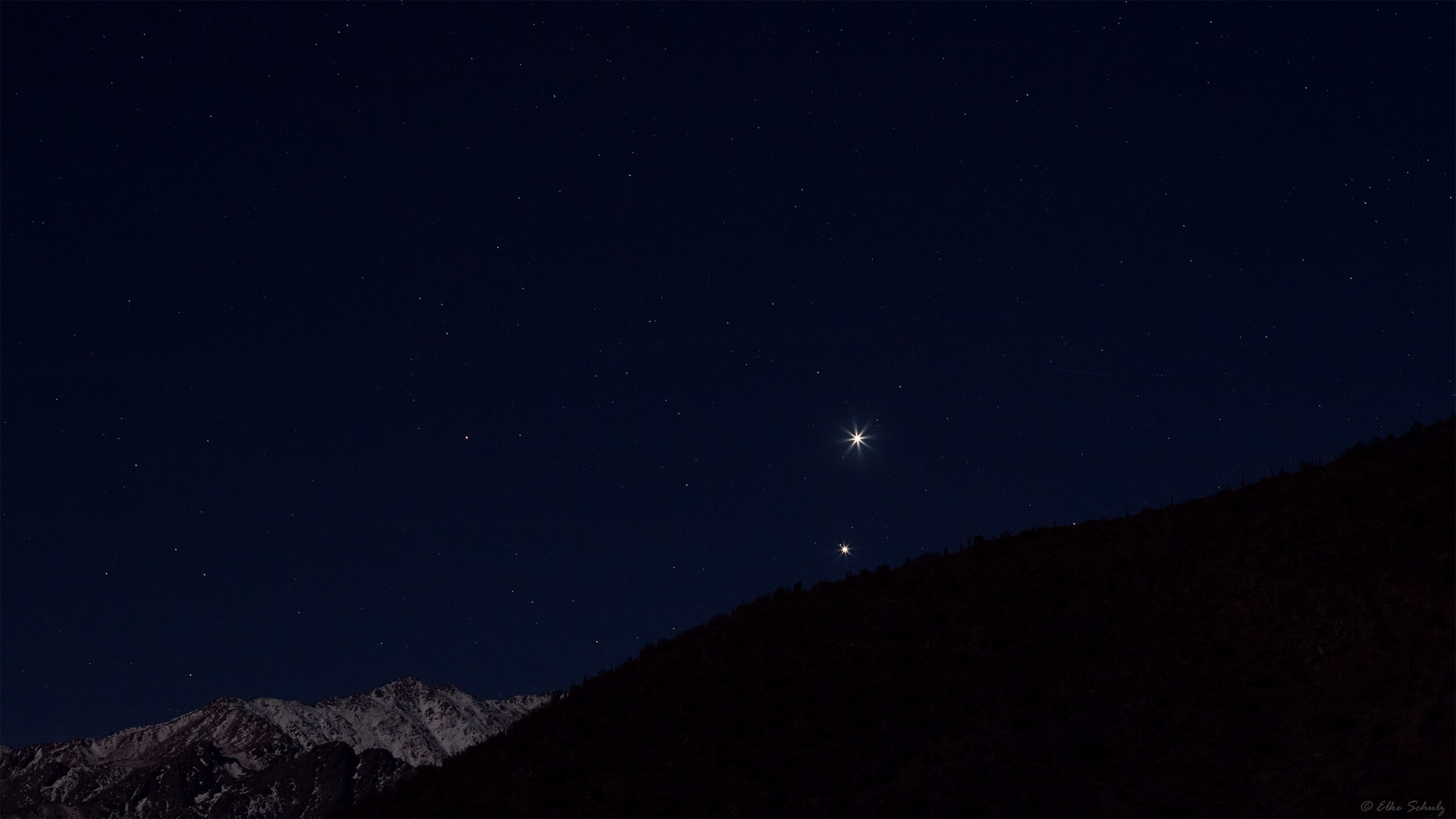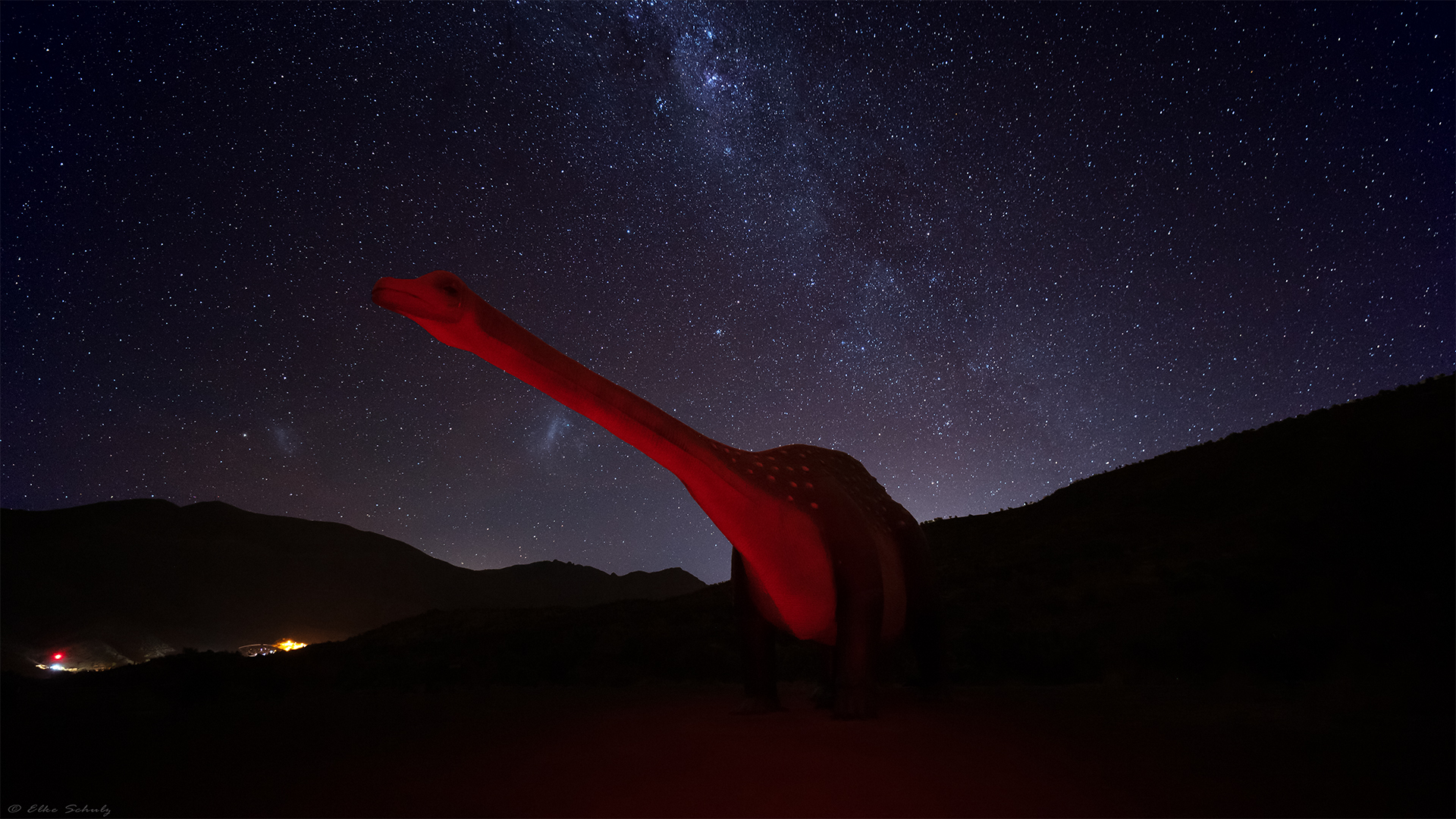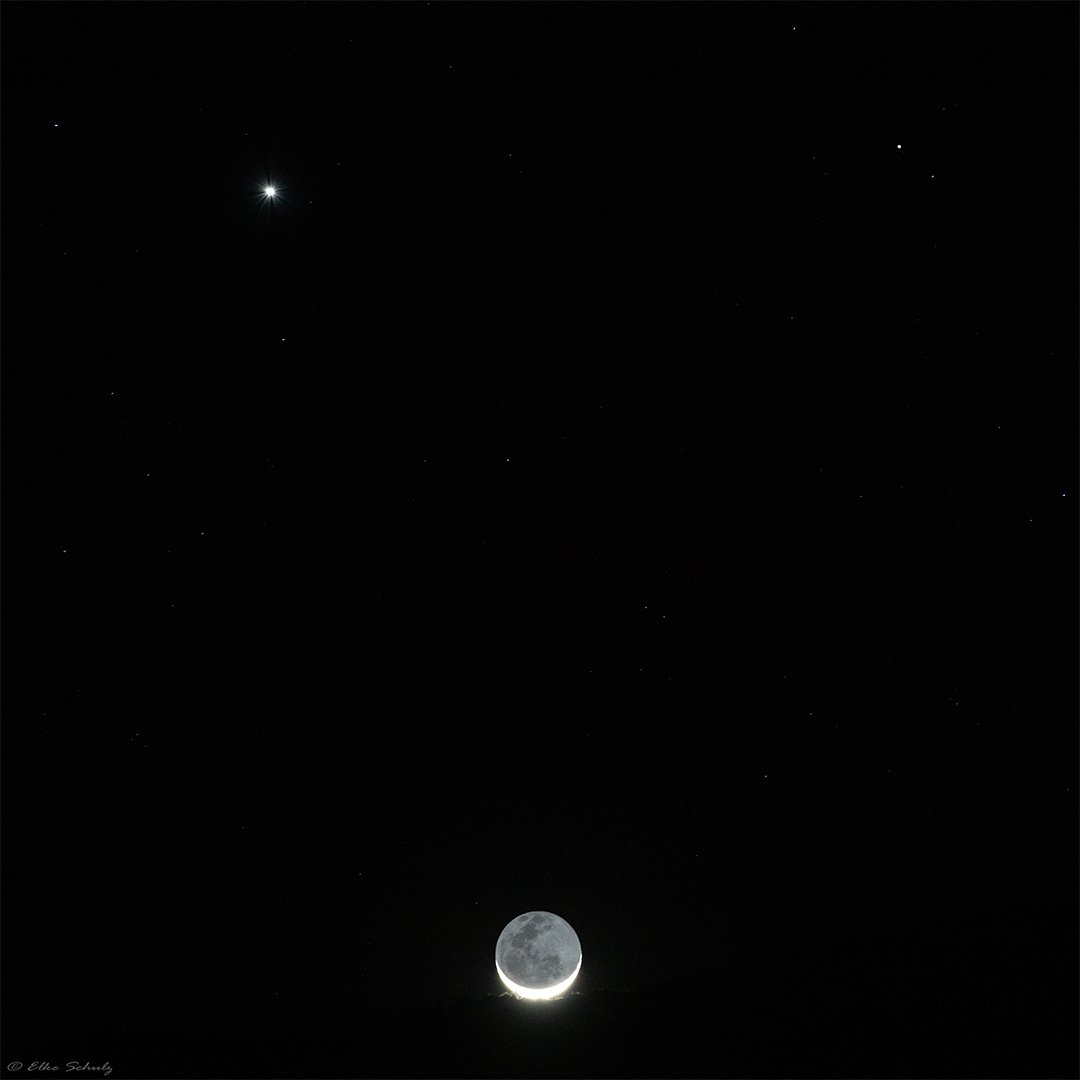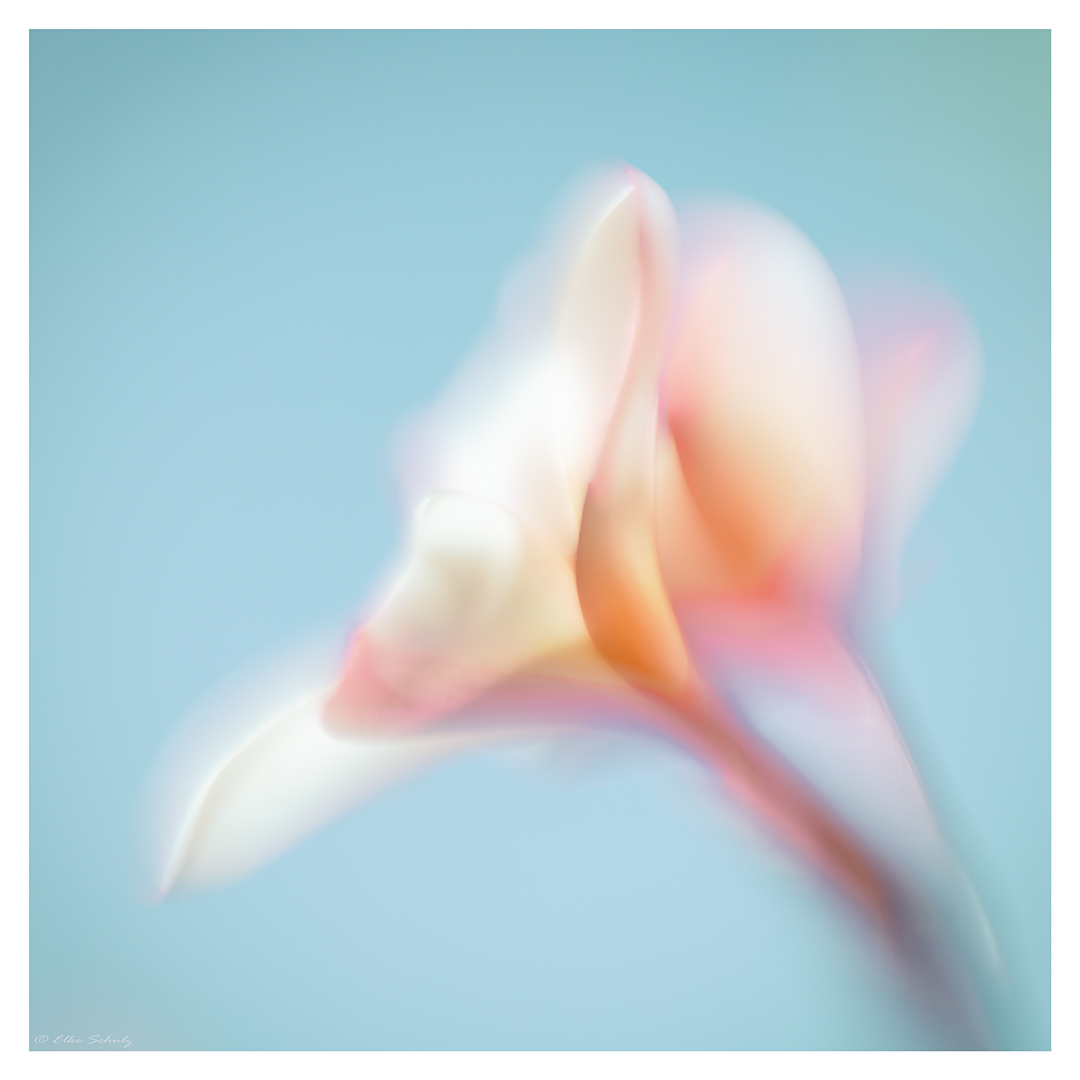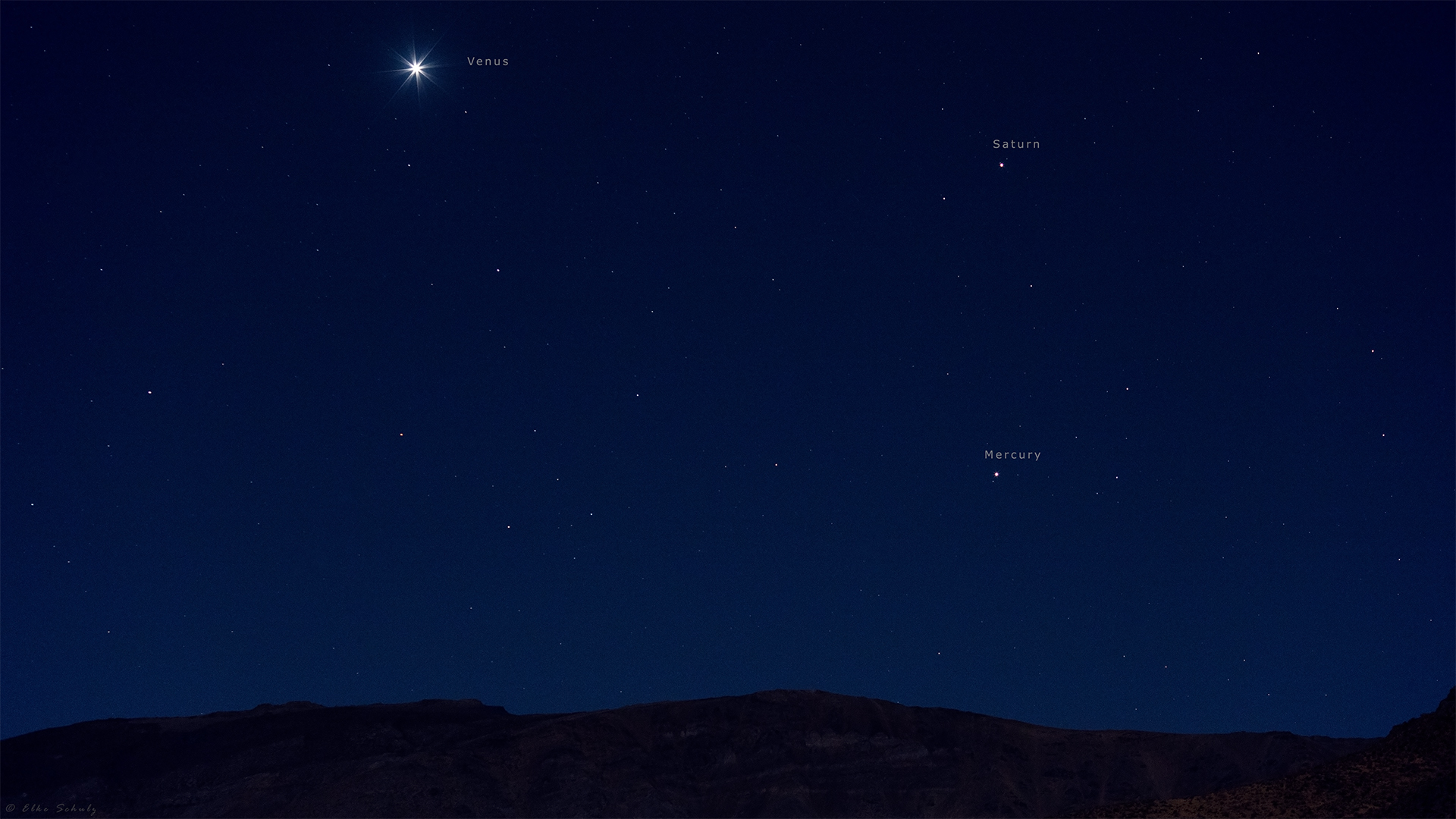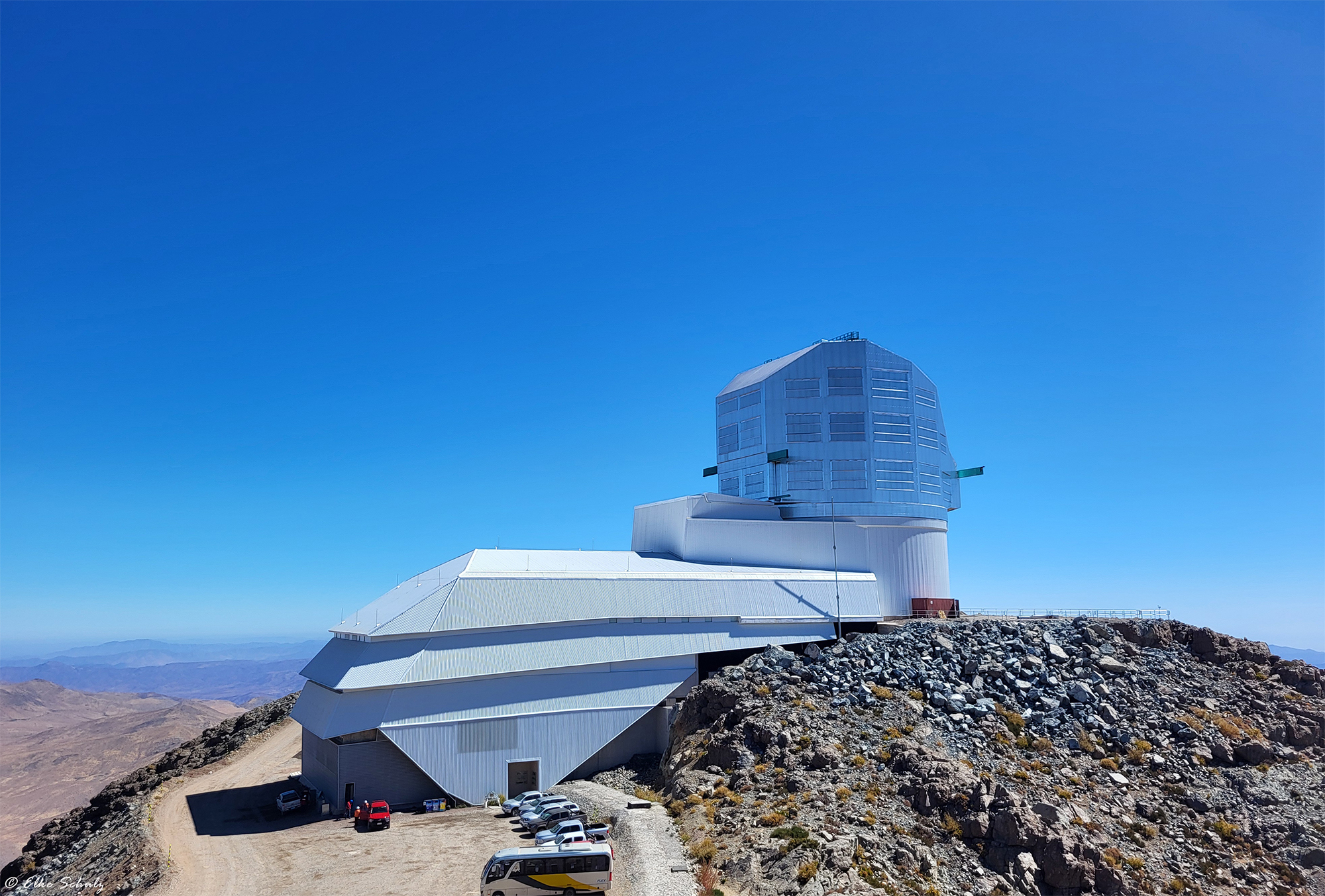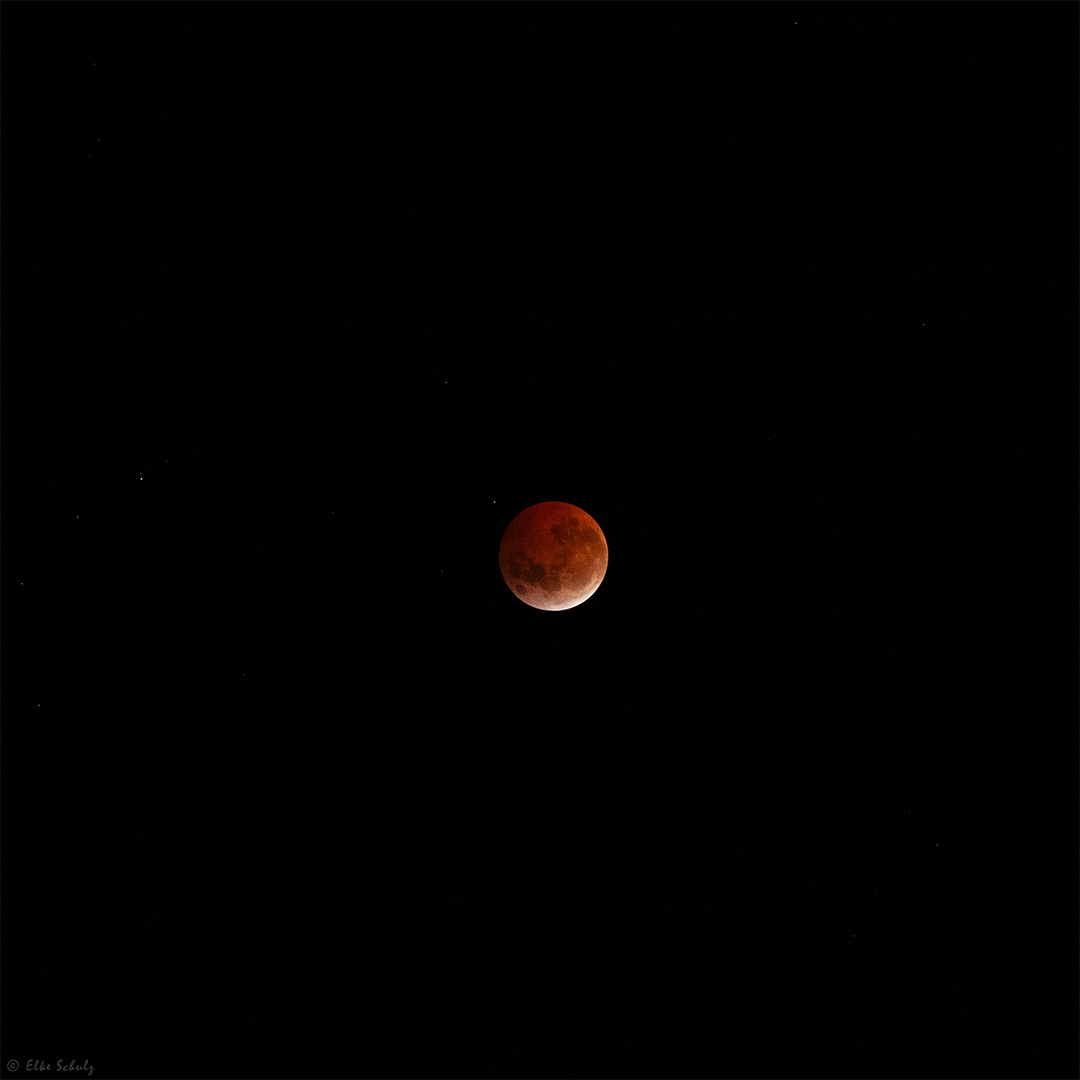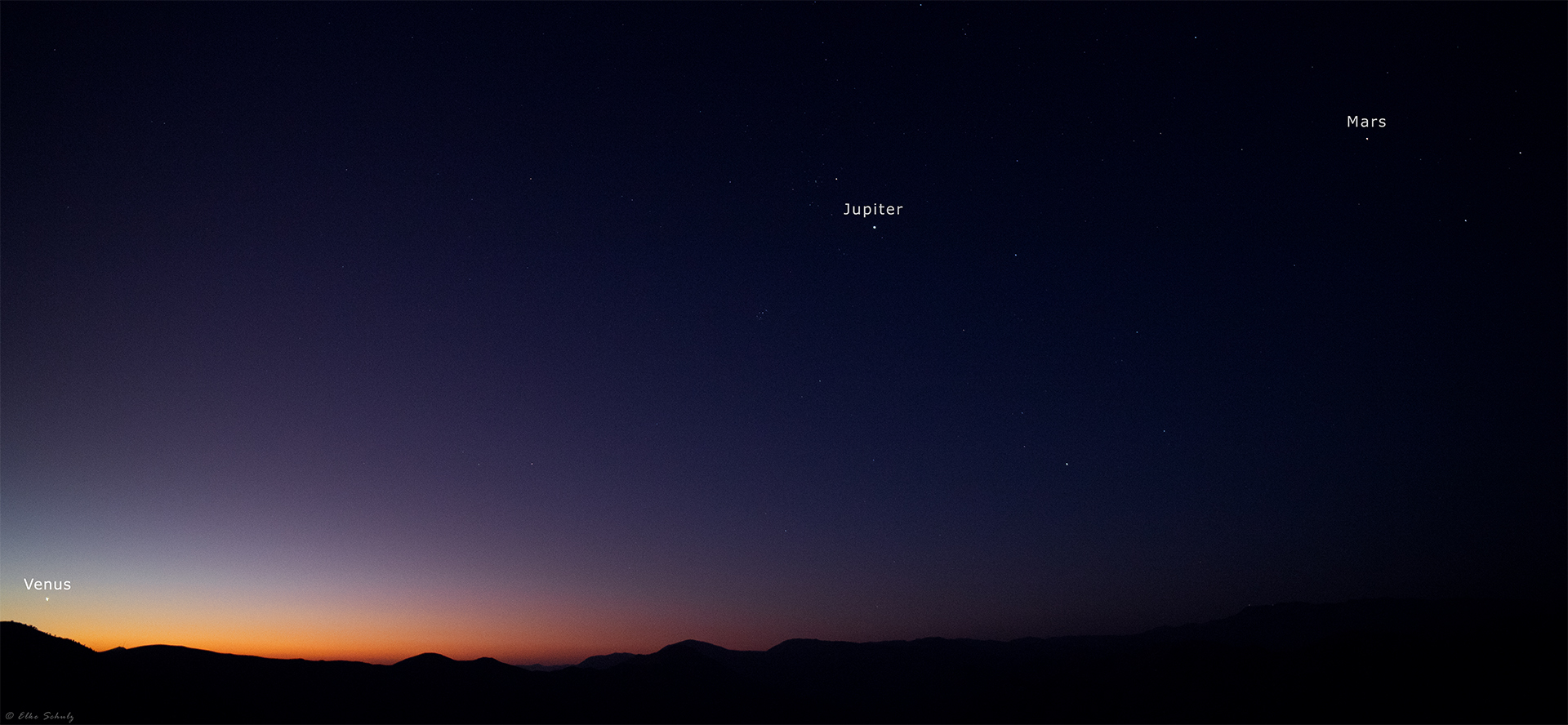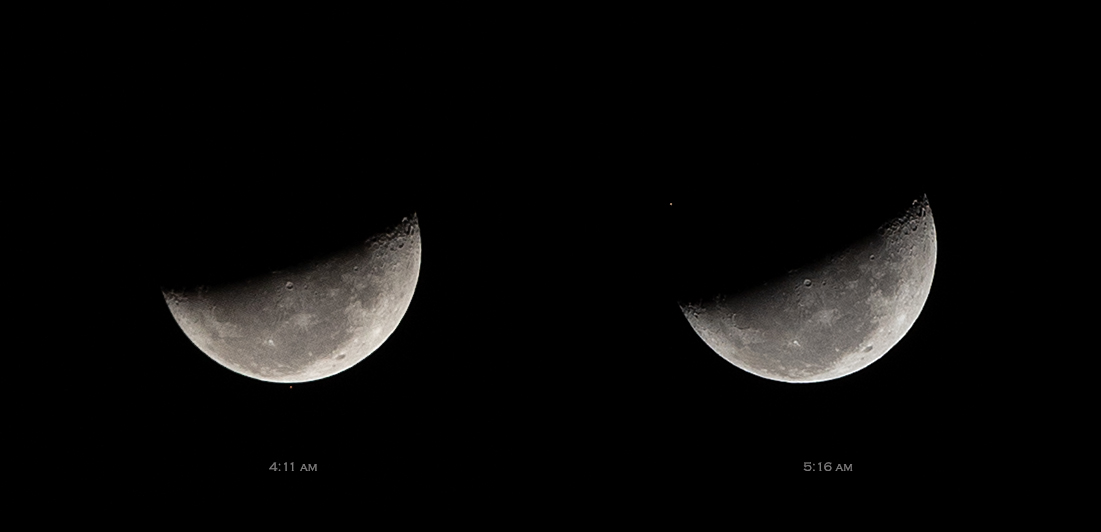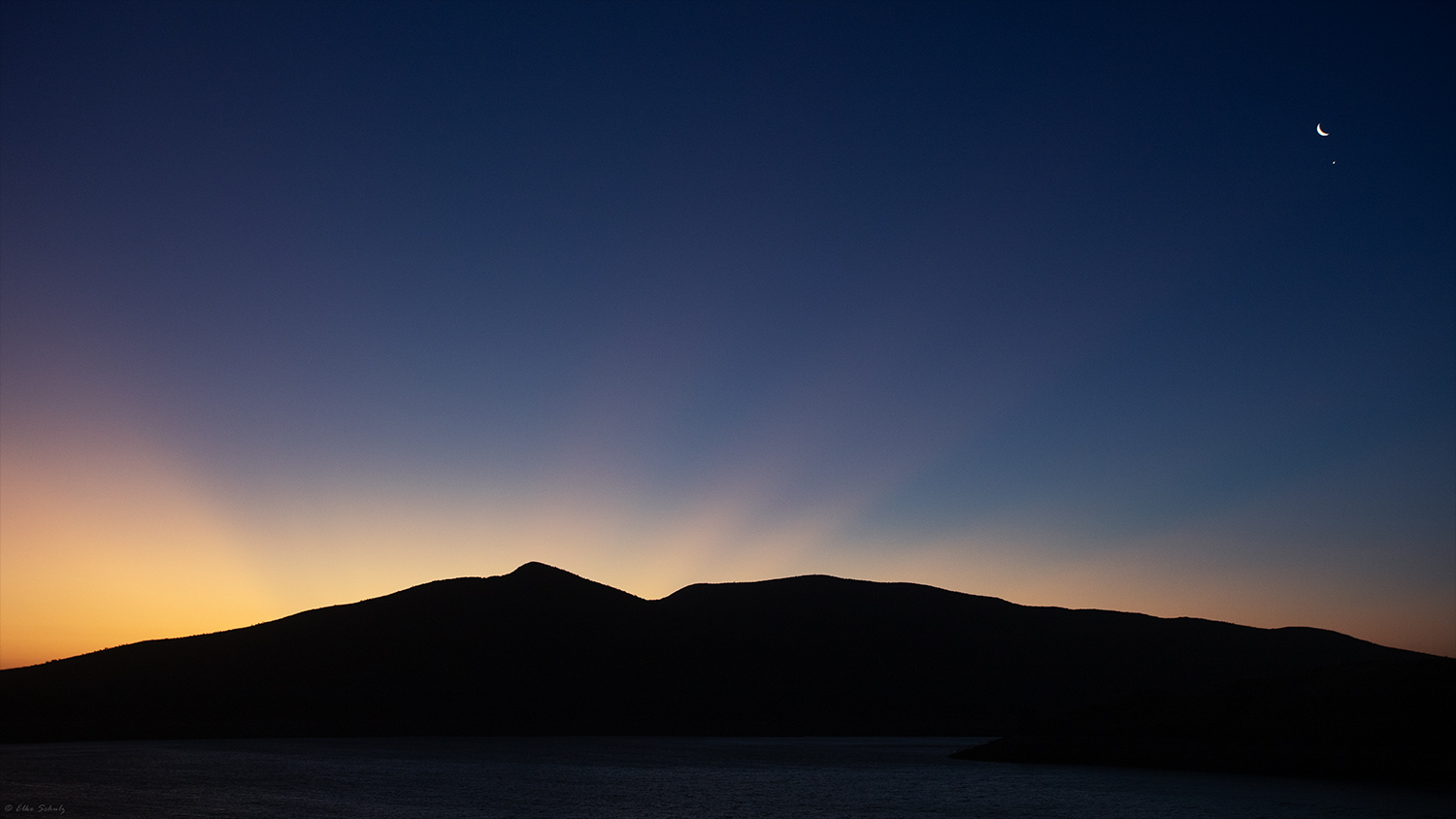Planetary Conjunction
On the morning of August 11, I captured brilliant Venus and bright Jupiter as they passed close to each other in the morning sky. The two images were taken 25 minutes apart and show Venus above and Jupiter below. A closer look at Jupiter reveals three of its Galilean moons: Ganymede to the upper left, with Europa and Callisto visible at the lower right.
Pichasca Natural Monument
I recently had the opportunity to take nighttime photographs at the Pichasca Natural Monument located in our valley. This visit required special permission from local authorities, as the park is usually closed after dark to protect its nocturnal wildlife. With its discoveries of petrified logs and fossilized dinosaur remains, the monument offers a captivating glimpse into Chile's prehistoric past. To help visitors visualize the ancient inhabitants of this land, a life-sized
Celestial Happy Face
On March 25, 2025, the encounter between the moon and the planets Venus and Saturn created a resemblance of a celestial happy face. In the top-left corner, you can see brilliant Venus, the brightest planet in the sky. The faint spot in the upper-right corner is the planet Saturn, the most distant planet that is still clearly visible to the naked eye. In the center, just above the horizon, the
Floral Beauty
Creative photographs of a Plumeria rubra flower, also known as frangipani. Its original range extends from Baja California to central Mexico and then south through Central America to Colombia and Venezuela. It is cultivated in the tropical and subtropical regions of the world, and has naturalized in most parts of tropical Asia and the Pacific Islands. When it blooms, its seductively fragrant flowers display beautiful shades of pink, white and
Planetary Rendevous
A beautiful planetary alignment can be seen from the Southern Hemisphere these days as Venus, Mercury and Saturn meet up for a morning rendezvous. The three planets are easily visible to the naked eye about one hour before sunrise. Neptune also joins this celestial parade, but is only visible with binoculars or a telescope. This alignment is best visible from the Southern Hemisphere, as the planets rise relatively high above the
Visit of the Vera C. Rubin Observatory
I recently had the great pleasure of visiting the Vera C. Rubin Observatory on Cerro Pachón in Chile. This observatory is a very ambitious 10-year survey project that aims to create the deepest and widest image of the universe. Using a fast-moving telescope and a wide field of view, Rubin will scan the entire Southern Hemisphere over three nights. Each night, around 1000 images will be generated, which corresponds to
Total eclipse of the Blood Worm Moon
In the early morning hours of March 14, 2025, we were treated to a beautiful total lunar eclipse here in Chile. Altogether, totality lasted just over an hour, with the maximum (when the moon was closest to the center of the shadow) being reached at 3:58 am. The most wonderful thing, however, were the many stars that appeared during totality.
Planetary Alignment
Last night, I was lucky and was able to photograph three of the five naked-eye planets that can be seen in the night sky right now. At the time of the photo, Venus was close to the horizon, while Jupiter and Mars were shining high above. At that time, Saturn and Mercury had already set. Currently, there is a big hype about seven planets being visible at night. And yes, while
Moon Antares Occultation
A beautiful occultation of Antares by the moon was visible in this part of Chile in the early morning of February 21, 2025. In astronomy, an occultation occurs when an object in front of the observer is obscured by another object passing between them. In this case, the waning moon blocked the view of Antares, a red supergiant and the brightest star in the constellation Scorpius. The beginning of the occultation was
Crepuscular Rays
On February 1, 2025, I aimed for the close conjunction of the crescent moon with the planet Venus. But to my surprise, I was treated to some beautiful crepuscular rays at the same time.




